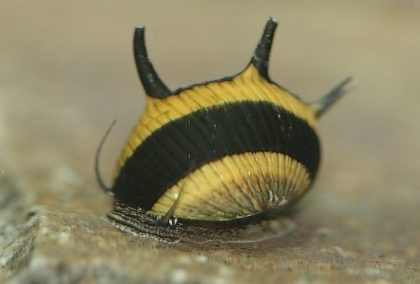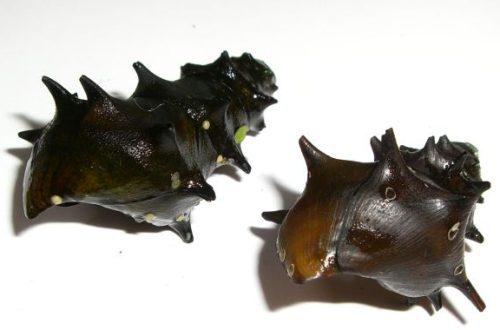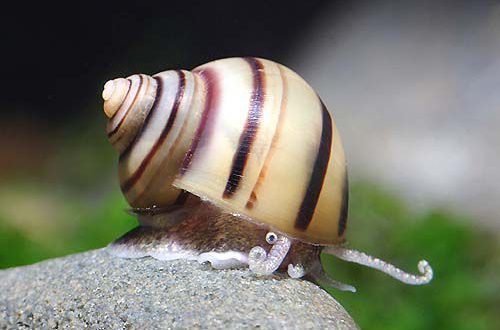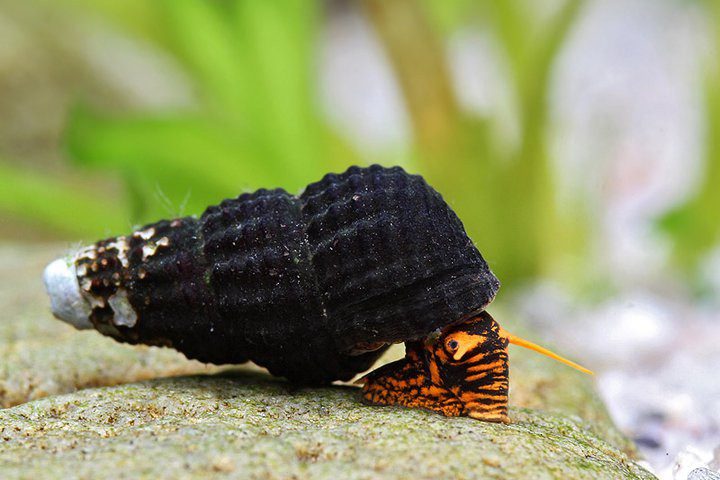
Tilomelania: maintenance, reproduction, compatibility, photo, description

Contents
Thylomelania – conditions of detention
After reading about tilomelania on the Internet, at first I was upset, because the recommended conditions for their maintenance were more suitable for aquariums under “Africa” than for the climate of “sour” water maintained in my aquariums.
Tilomelanias in nature (and they come from the island of Sulawesi, in Indonesia) live in water with a pH of 8 … 9, of medium hardness, they love space and rocky soils.
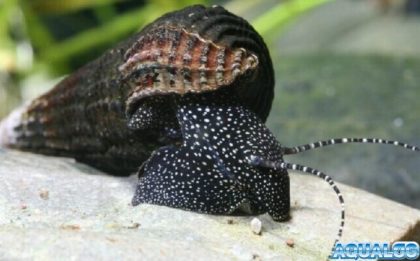
A friend from a business trip to Europe (knowing about my addictions) brought gifts – a couple of orchids and a jar of snails, in which there were “devil’s thorns”, which he mistook for a black morph of tilomelania, as well as orange and olive tilomelania. My joy knew no bounds.
Tilomelania – snails and their neighbors
Thylomelanias are not conflicting, I have them coexist in the same container with colored ampoules, “devil’s spikes”, coils, melania and “Pokemon”.
These snails have another interesting feature, due to which they are kept with their biotope neighbors, the Sulawesi shrimp: tilomelania secrete mucus, which is extremely nutritious for shrimp.
behavior in the aquarium. Large individuals of Tylomelania get along only with their own kind, so they cannot be kept in a common aquarium with fish and shrimps. Small individuals, on the contrary, are peaceful and get along very easily with any neighbors.
BREEDING Interestingly, all Tylomelania snails differ in gender, and they also belong to viviparous animals.
Interestingly, all Tylomelania snails differ in gender, and they also belong to viviparous animals.
The female Thylomelania bears up to 2 eggs at the same time, which can reach from 3 to 17 mm in diameter. When an egg appears, the female moves it with wave-like movements from the mouth-groove to the tortoise leg. After a short time, the white shell of the egg dissolves, and a small snail will appear from it, which can immediately feed on its own.
STUNNINGLY BEAUTIFUL
The appearance of thylomelanias is very variable, but it is always impressive. They can be either with a smooth shell or covered with spikes, cusps and whorls. The length of the shell can be from 2 to 12 cm, so they can be called gigantic. The shell and body of the snail is a real feast of color. Some have a dark body with white or yellow dots, others are solid, orange or yellow thylomelania, or jet black with orange tendrils. But they all look very impressive.
The eyes of tilomelanies are located on long, thin legs and rise above her body. Most of the species have not even been described in nature yet, but are already found on sale.
DIVING IN NATURE
Tilomelanias live in nature on the island of Sulawesi. The island of Sulawesi, near the island of Borneo, has an unusual shape. Because of this, it has different climatic zones. The mountains on the island are covered with tropical forests, and the narrow plains are close to the coast. The rainy season here lasts from late November to March. Drought in July-August. On the plains and in the lowlands, the temperature ranges from 20 to 32C. During the rainy season, it drops by two degrees.
Tilomelania lives in Lake Malili, Poso and their tributaries, with both hard and soft bottoms. Poso is located at an altitude of 500 meters above sea level, and Malili at 400. The water is soft, the acidity is from 7.5 (Poso) to 8 (Malili). The largest populations live at a depth of 5-1 meters, and the number drops as the bottom sinks.
In Sulawesi, the air temperature is 26-30 C all year round, respectively, and the water temperature is the same. For example, in Lake Matano, a temperature of 27C is observed even at a depth of 20 meters.
To provide the snails with the necessary water parameters, the aquarist needs soft water with a high pH. Some aquarists keep thylomelanium in moderately hard water, although it is not known how this affects their lifespan.
FEEDING TILOMELANIA
A little while later, after the tilomelania get into the aquarium and adapt, they will go in search of food. They need to be fed several times a day. They are hardy and will eat a variety of foods. In fact, like all snails, they are omnivores.
Spirulina, catfish tablets, shrimp food, vegetables – cucumber, zucchini, cabbage, these are the favorite foods for thylomelanias. They will also eat live food, fish fillets. I note that tilomelanies have a huge appetite, since in nature they live in a zone poor in food. Because of this, they are active, insatiable and can spoil the plants in the aquarium. In search of food, they can dig into the ground.



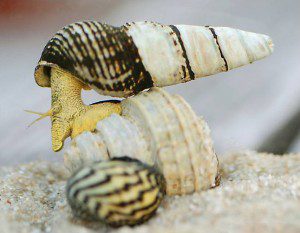 Interestingly, all Tylomelania snails differ in gender, and they also belong to viviparous animals.
Interestingly, all Tylomelania snails differ in gender, and they also belong to viviparous animals.